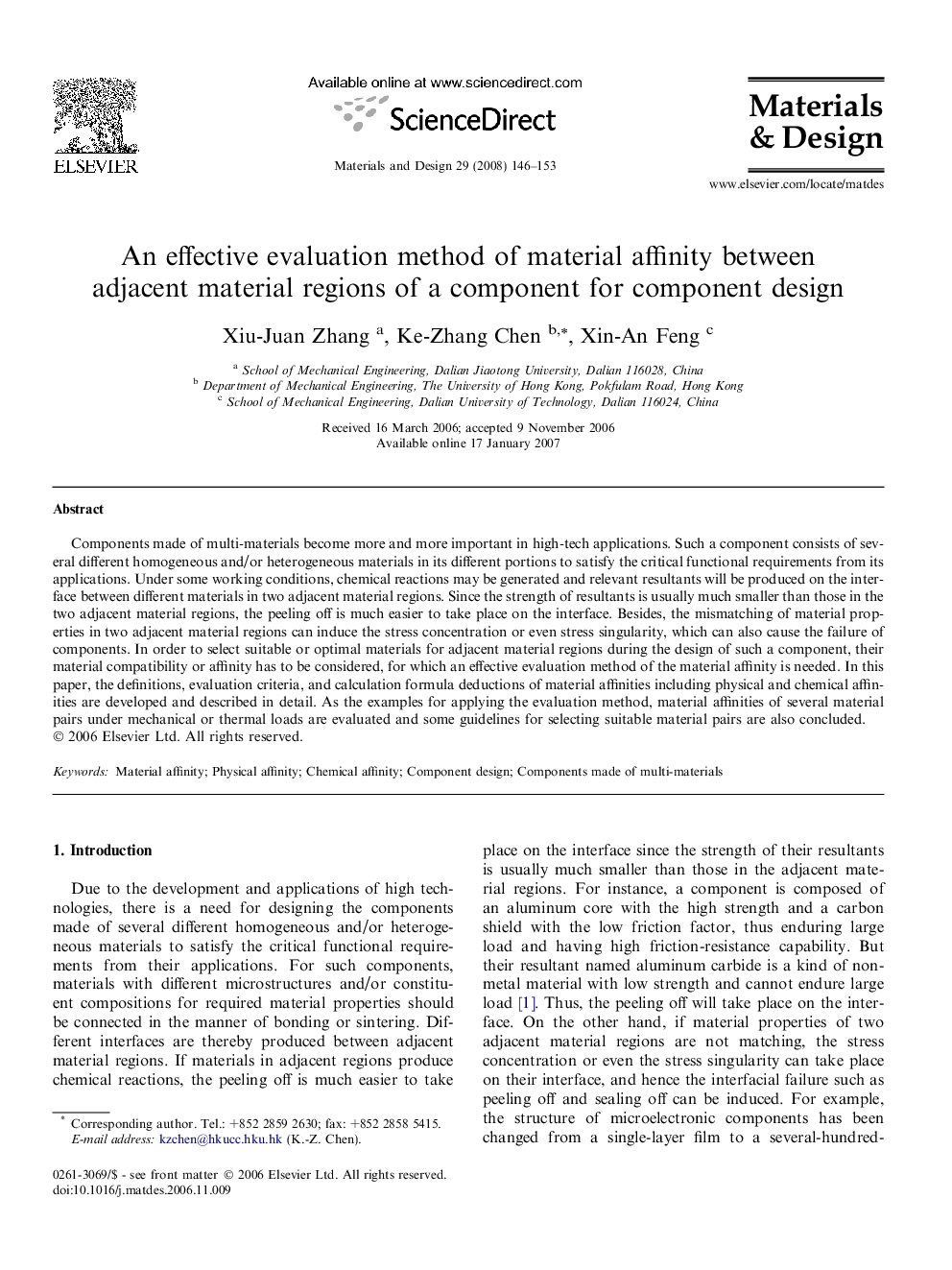| Article ID | Journal | Published Year | Pages | File Type |
|---|---|---|---|---|
| 833242 | Materials & Design (1980-2015) | 2008 | 8 Pages |
Components made of multi-materials become more and more important in high-tech applications. Such a component consists of several different homogeneous and/or heterogeneous materials in its different portions to satisfy the critical functional requirements from its applications. Under some working conditions, chemical reactions may be generated and relevant resultants will be produced on the interface between different materials in two adjacent material regions. Since the strength of resultants is usually much smaller than those in the two adjacent material regions, the peeling off is much easier to take place on the interface. Besides, the mismatching of material properties in two adjacent material regions can induce the stress concentration or even stress singularity, which can also cause the failure of components. In order to select suitable or optimal materials for adjacent material regions during the design of such a component, their material compatibility or affinity has to be considered, for which an effective evaluation method of the material affinity is needed. In this paper, the definitions, evaluation criteria, and calculation formula deductions of material affinities including physical and chemical affinities are developed and described in detail. As the examples for applying the evaluation method, material affinities of several material pairs under mechanical or thermal loads are evaluated and some guidelines for selecting suitable material pairs are also concluded.
